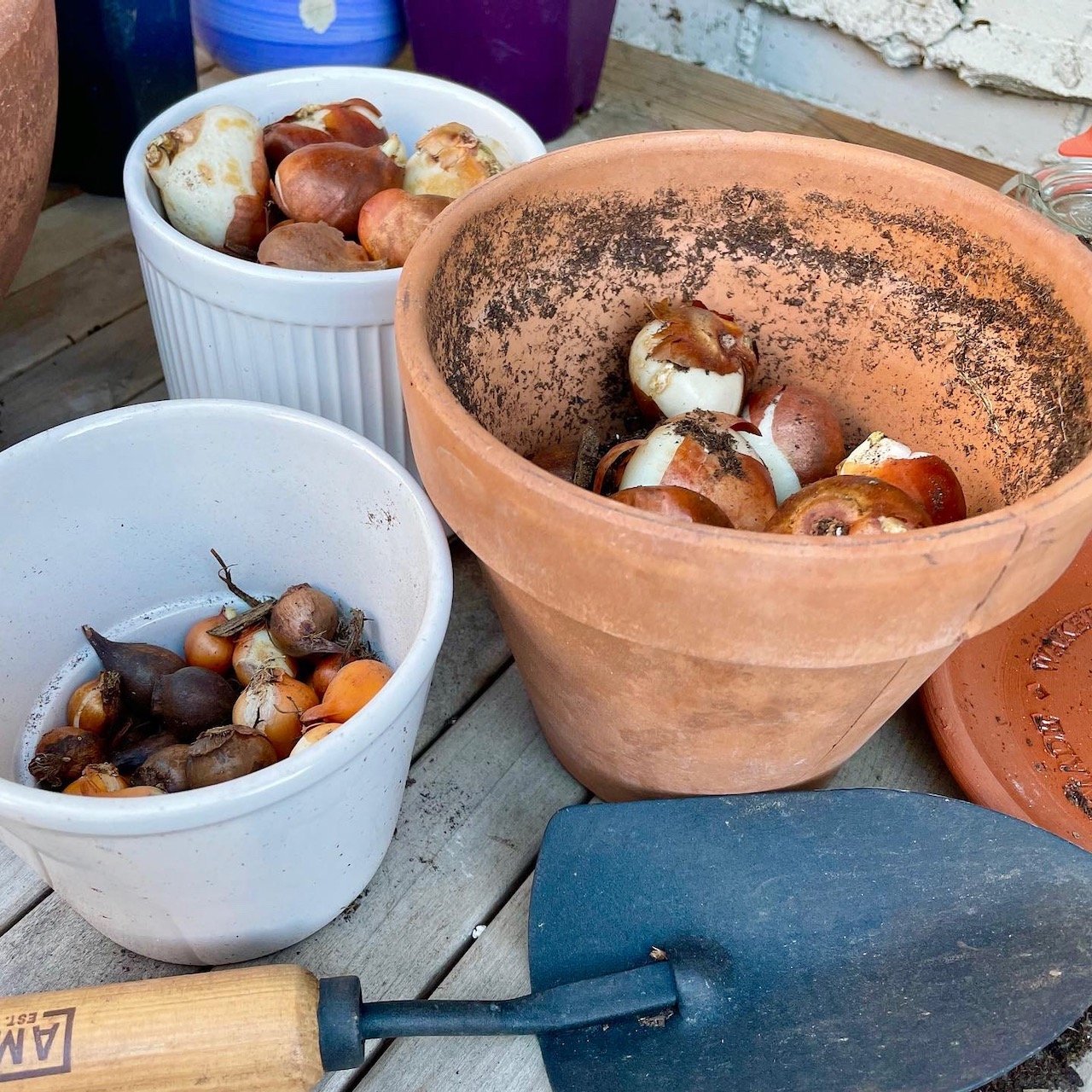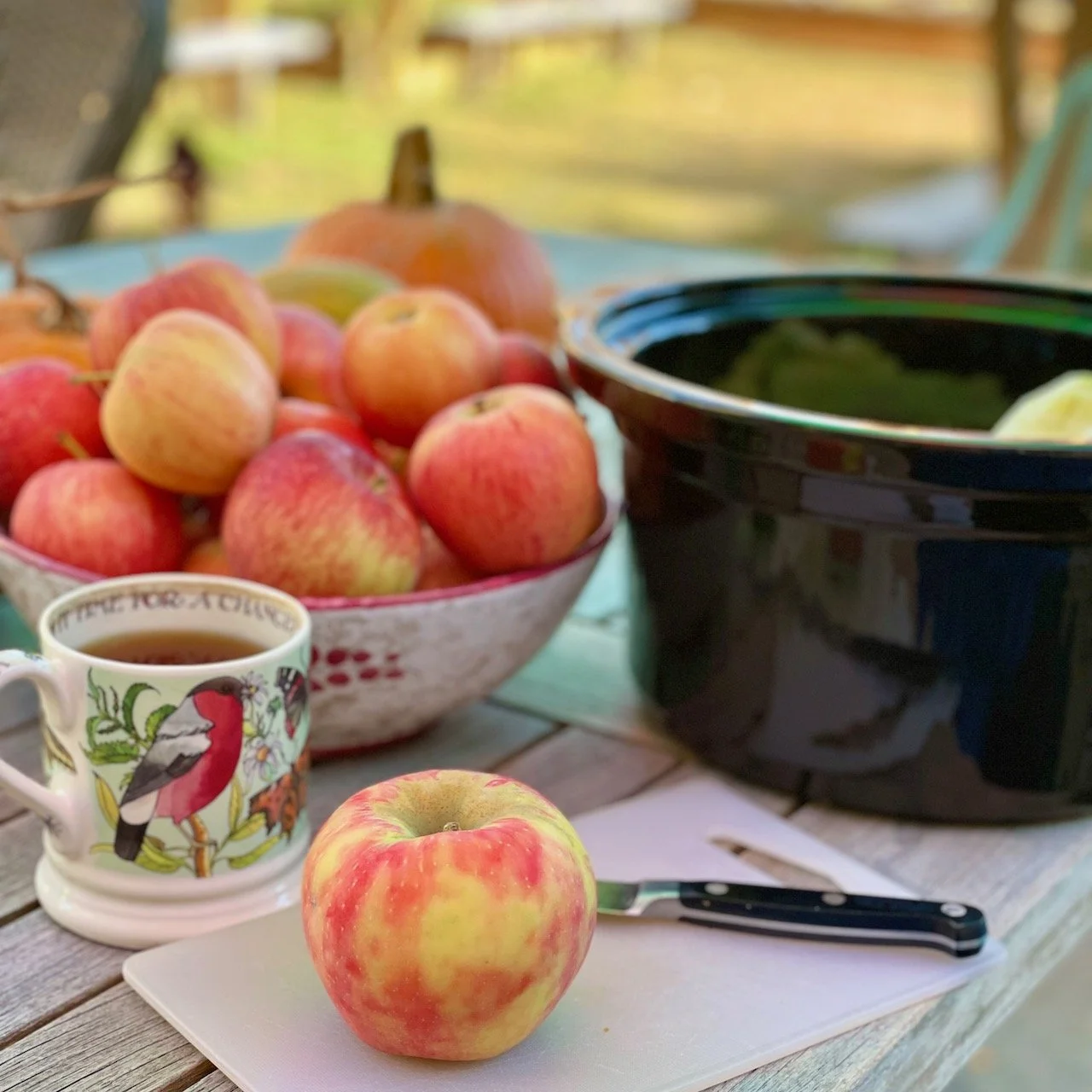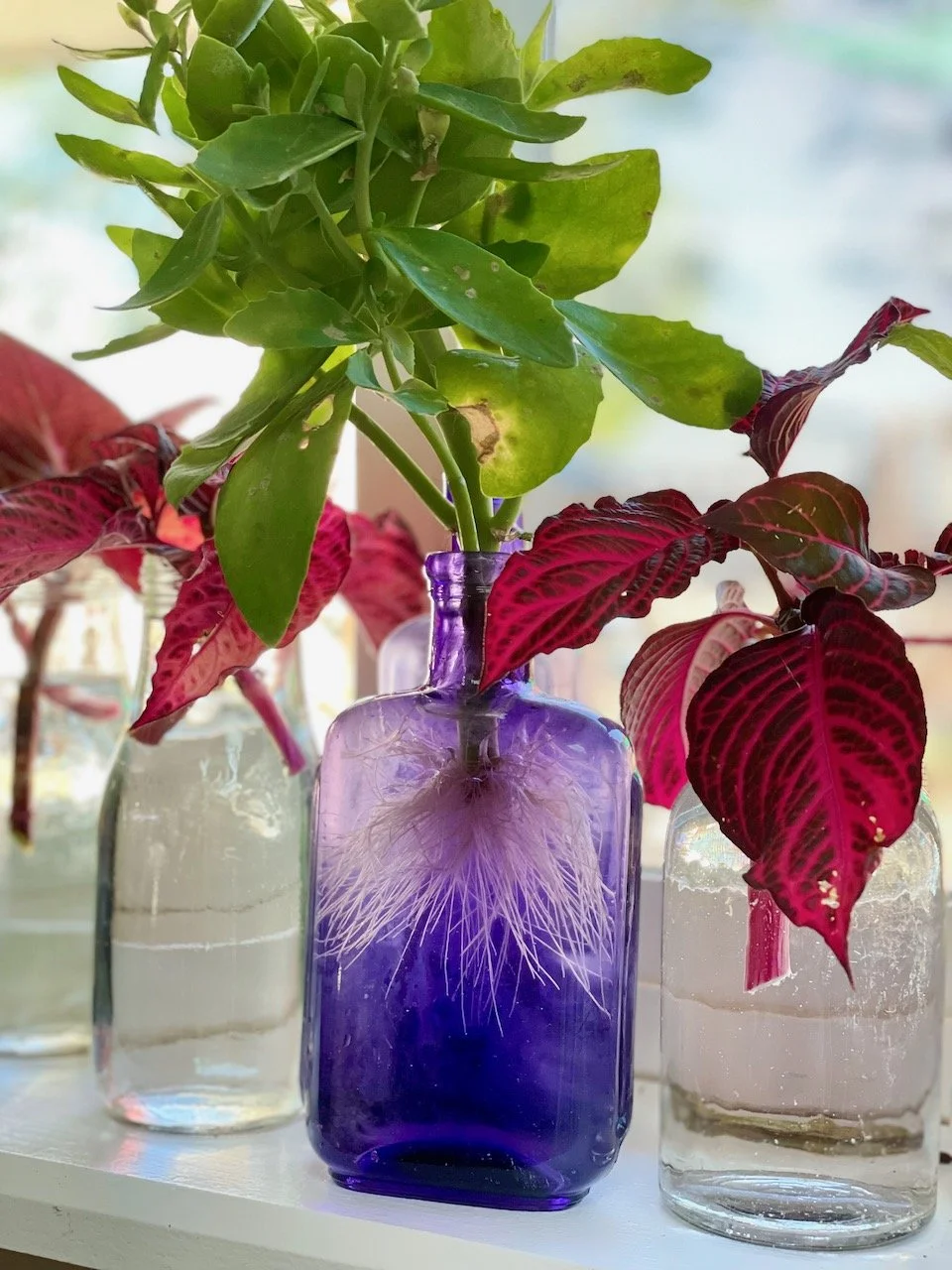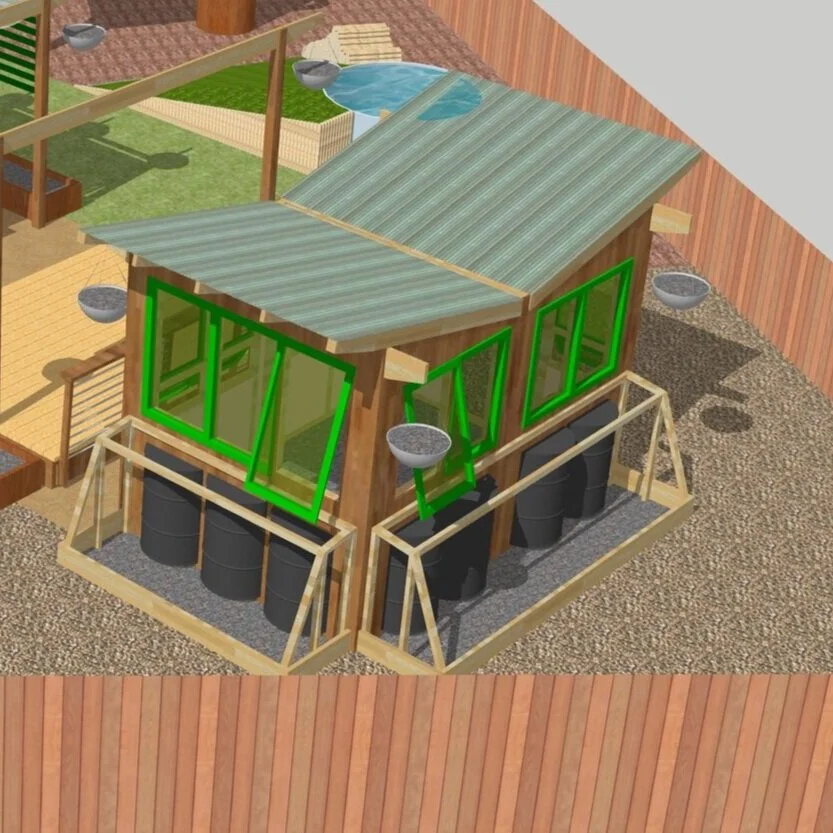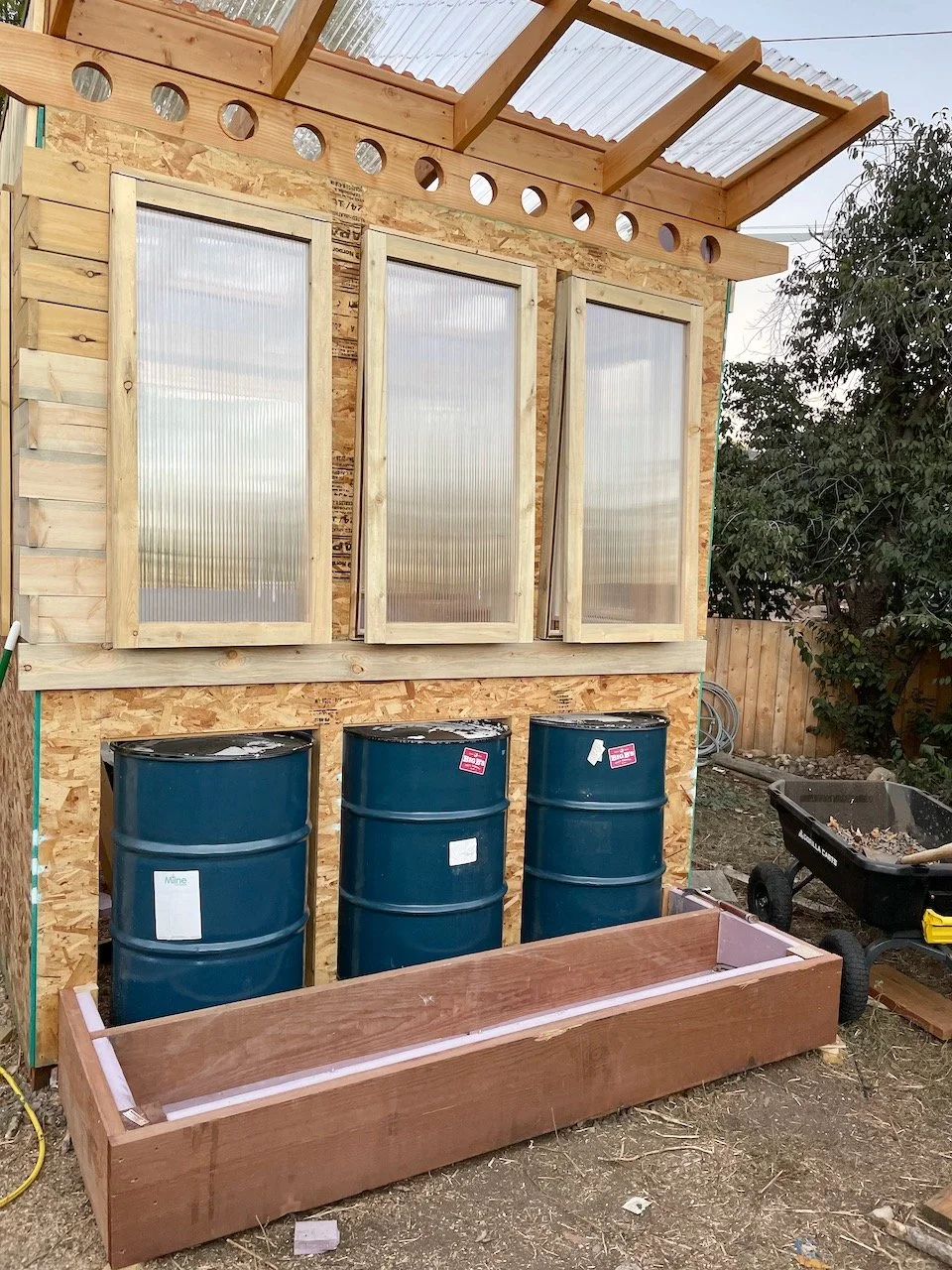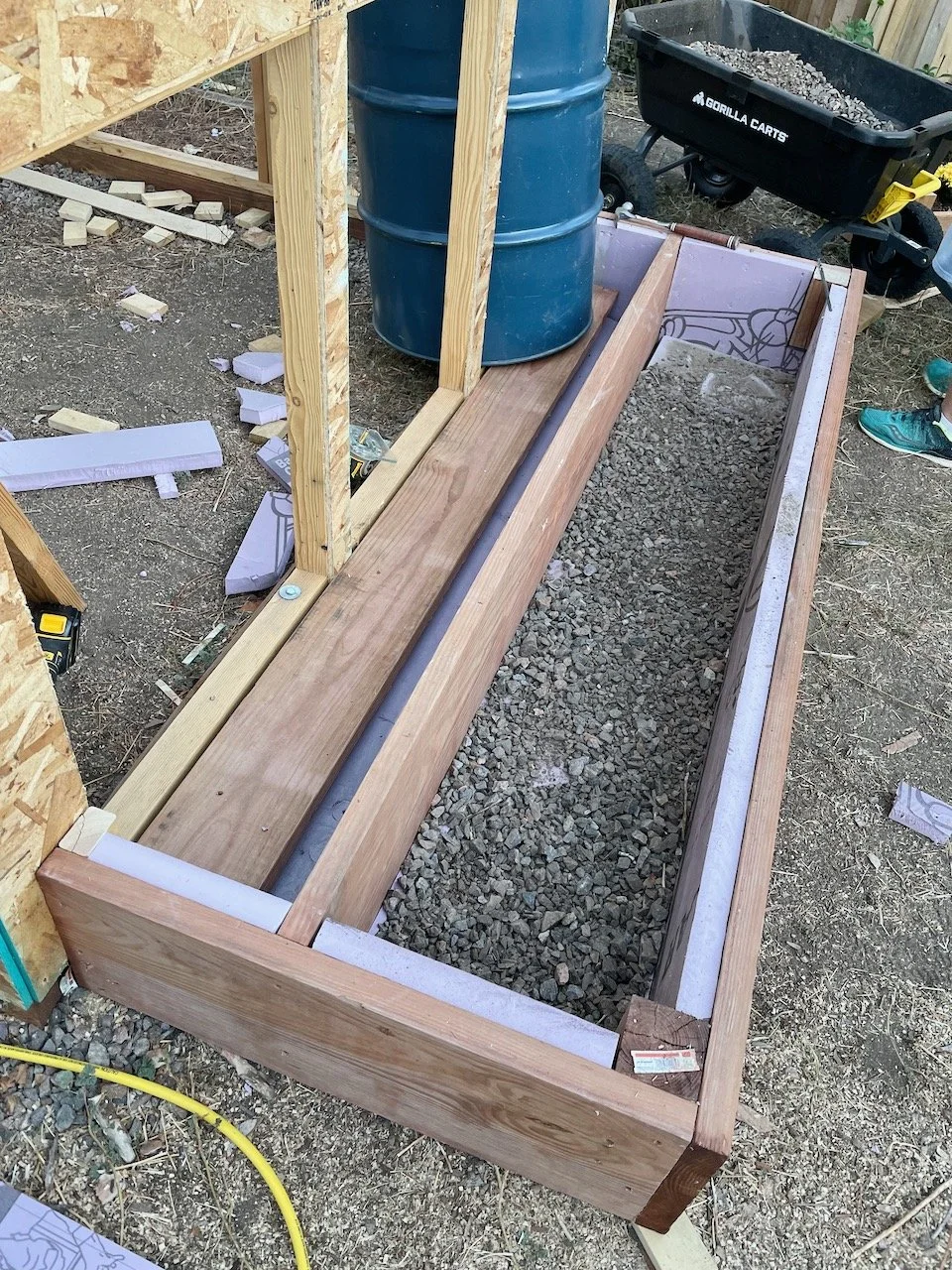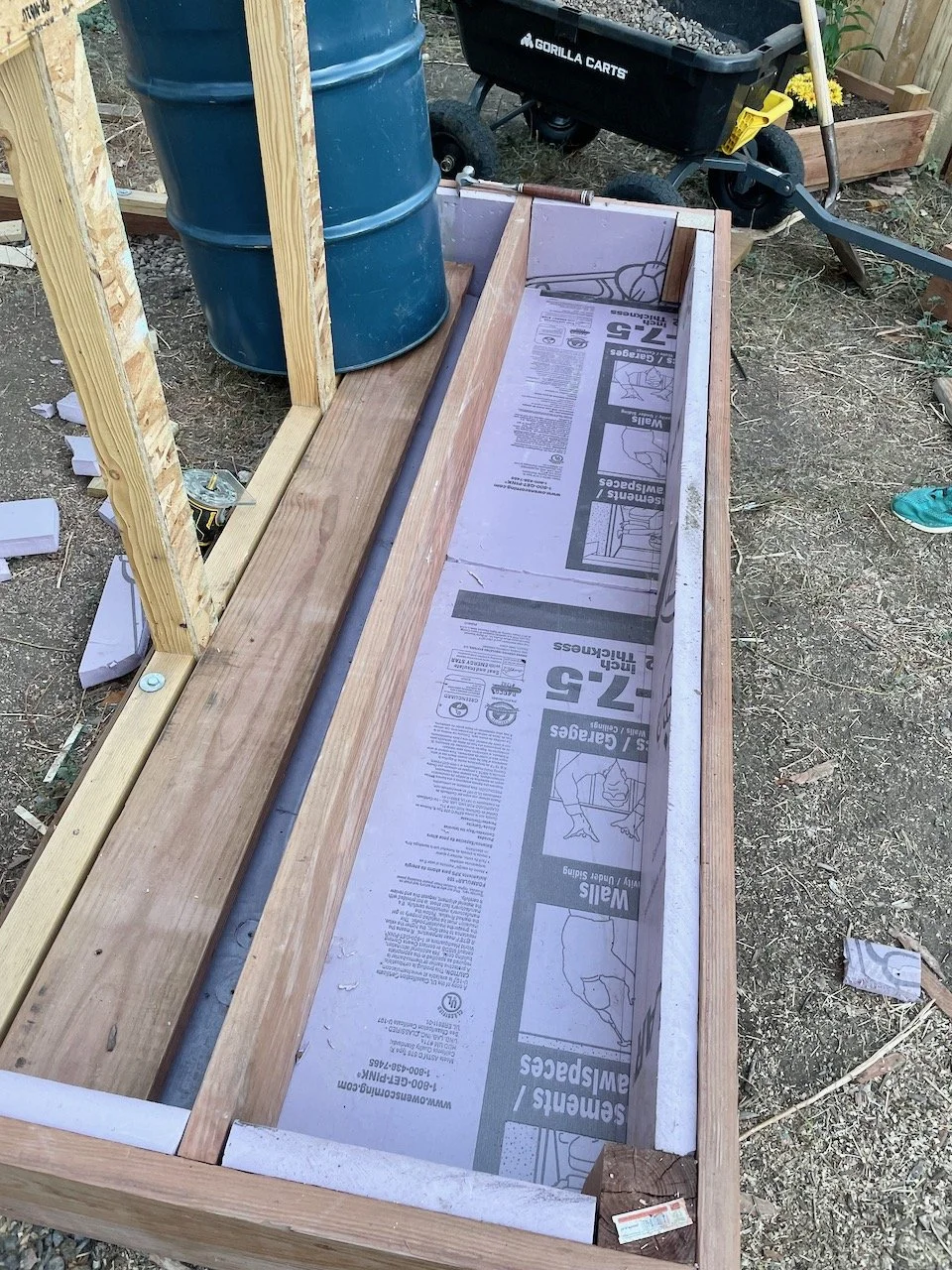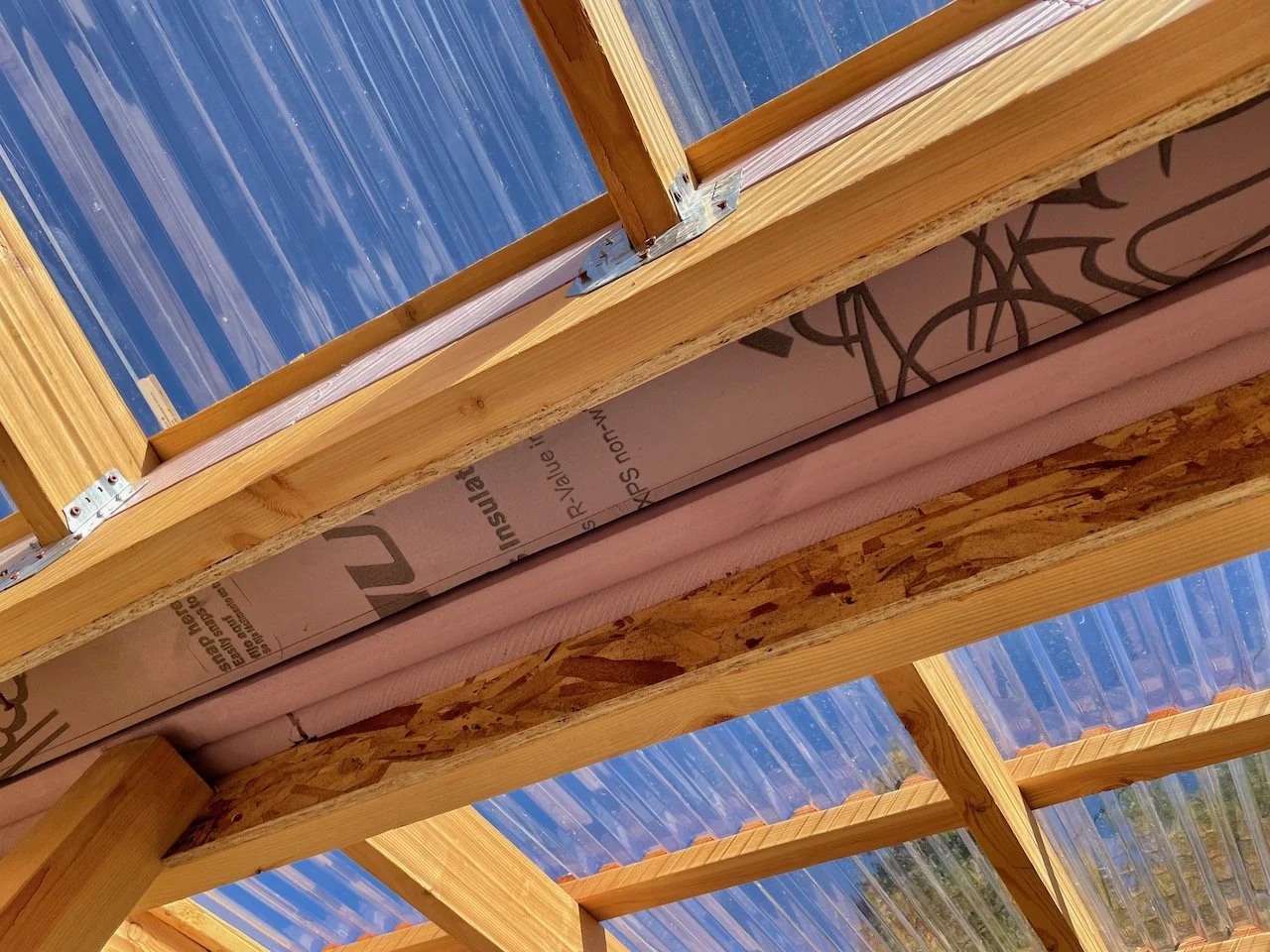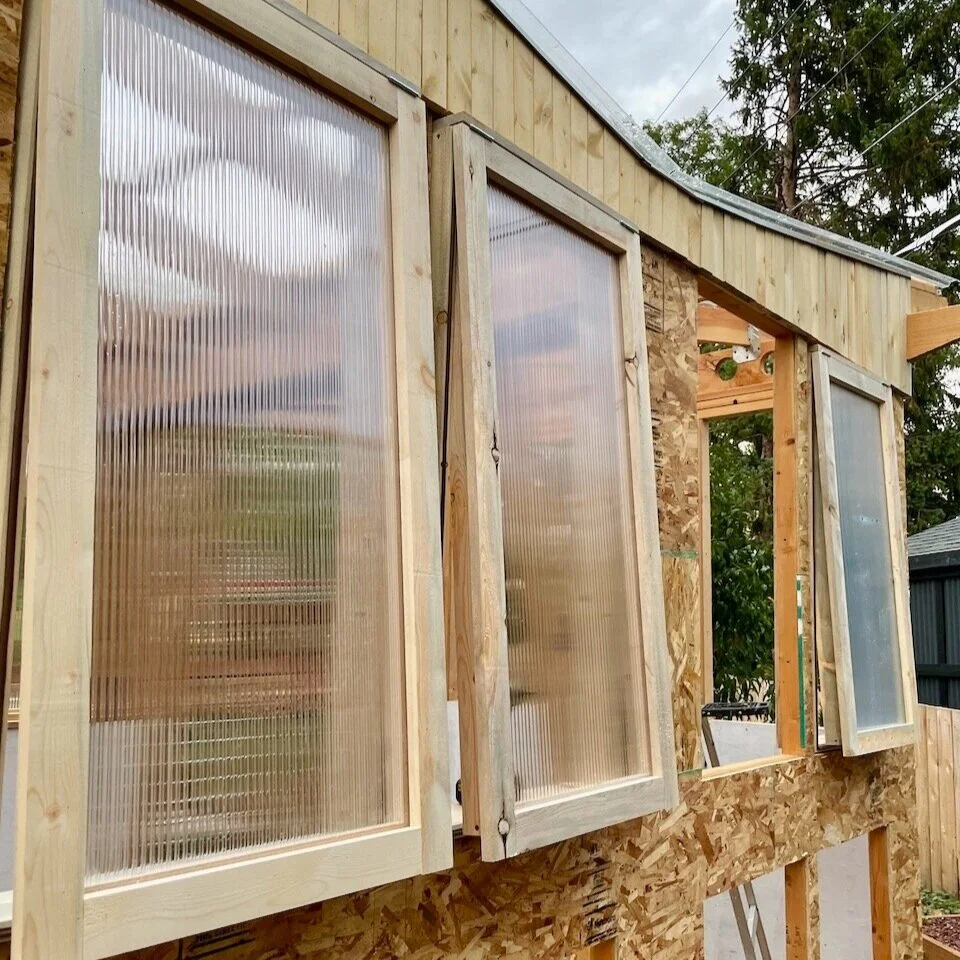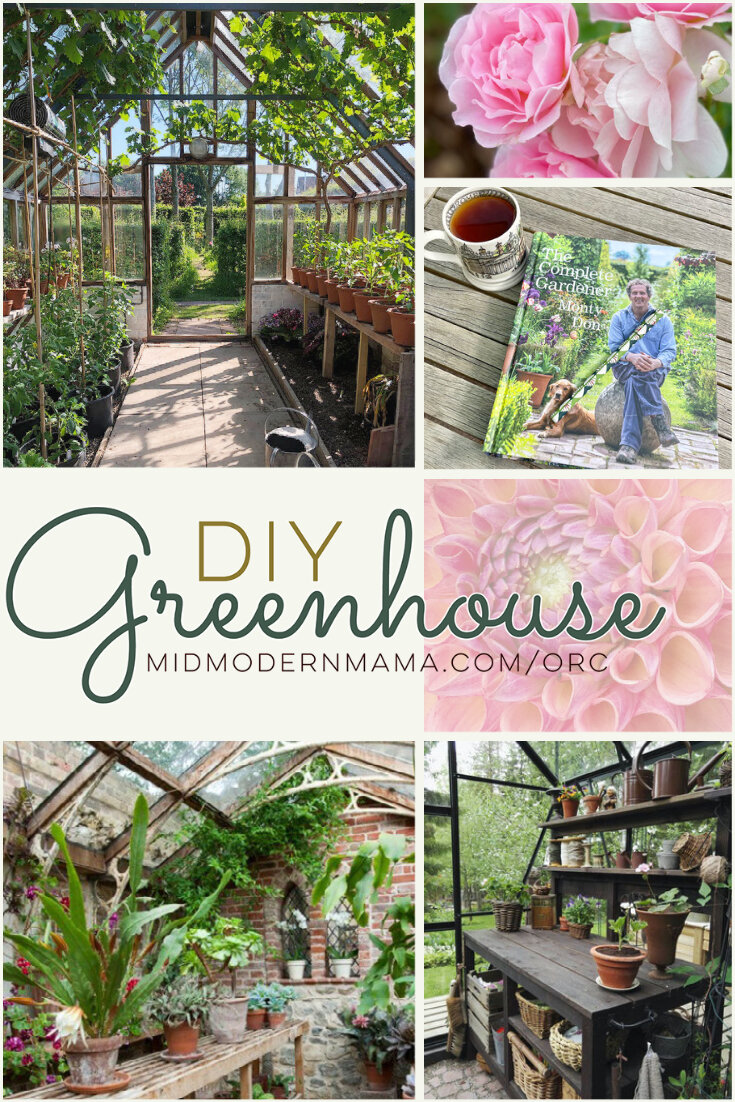Week Four | October 21 | Keeping The Greenhouse Warm
For the Fall 2021 One Room Challenge we are building a whole room — a greenhouse! And we will be racing the snow to get it done, too. I’ll let you in on the inspiration board as well as plans for my dream greenhouse — a place for starting seedlings, overwintering tender perennials, and extending our short Colorado growing season. Be sure to check in on all of the other ORC projects on the ORC blog here.
Happy Fall! It is crisp and glorious here -- my favorite season! I made applesauce and my husband baked ginger cookies. I’m drinking hot tea again. Life is good!
So here we are in Week 4 -- the half-way point for the One Room Challenge. Things are moving along. Sometimes fast. Sometimes more slowly. But always moving forward. I keep thinking that by next week we will have everything closed up. Nope. So I am going to stop making THAT prediction. But we do keep moving forward, and that’s what really matters.
Today I want to talk a bit about the heating and cooling elements we have incorporated into The Greenhouse design. Last winter as I dreamed about building a Greenhouse, I did a lot of reading. A lot. Keeping a greenhouse cool in the summer and warm in the winter can be a massive challenge -- particularly in a climate like ours.
Here in Colorado, between Denver and Boulder, we live at an elevation of about 5400 feet above sea level which means we get more UV exposure than anywhere else I have ever lived. Frankly, I can feel it -- and I’m always wearing sunscreen to protect myself, too. The elevation coupled with our proximity to the Rocky Mountains means that we can get some extreme weather with big temperature swings, howling winds, hail, and lots of snow. We also get 300 days of sunshine every year, so frankly, I find the weather here to be pretty darn fabulous! But it makes gardening a challenge, and maintaining a greenhouse can be a challenge, too.
Additionally, we aren’t running electricity out to The Greenhouse -- at least not initially. I want to try to keep it warm and cool without having to resort to using power. Lots of greenhouse growers have to use heaters, fans, and other electrical means to maintain a consistent temperature.
Now, I am not building a hot house. I won’t be raising rare orchids or exotic plants. I would LOVE to be able to have a lemon tree and a plumeria -- but we will see. So it doesn’t have to be a consistent temperature all year nor does it need to be 70℉ all winter long. My goal: keep it above 40℉ during the winter. In the summer, if it is too hot, I will just move everything outside.
But keeping a greenhouse warm when we do have weeks at or below zero will be a challenge. I’m realistic about that. And I consider this first winter to be a test run.
So what are we doing to stabilize temperatures in The Greenhouse?
Plant cuttings started on my kitchen window — we need a greenhouse, pronto!
A Trombe Wall: Put the Sun to Work
We are employing the sun. Like I said, we have 300 sunny days here, and we are going to put the sun to work. And we are doing it in several different ways. The Greenhouse has been designed to employ a Trombe Wall. The idea behind a Trombe Wall is simple: create a wall which collects and stores energy from the sun in the form of heat during the day and then releases that heat back into The Greenhouse at night.
When building a traditional Trombe Wall, you build a black wall of stone or masonry facing the equator. Then, a few feet in front of that wall, a wall of glass is erected. The space between is filled with air which is then circulated through the building. And the wall radiates the stored energy, like a battery, into the space.
Our Trombe Wall will be a little different. Technically we have two Trombe Walls. We are deploying this technique on both the south-east and south-west facing walls of The Greenhouse to capture as much sunlight as possible. But the walls are only half-height as there are windows above.
Taking the place of the stone or masonry: steel barrels filled with water. First of all: this is cheaper. The barrels were $15 each on the Facebook Marketplace. We are using a total of 7 in the Trombe Wall for a total of $105. The barrels have an added bonus, too: water holds heat energy better and releases it more slowly than stone or concrete. So the Trombe Wall will be more efficient than if it were built out of another material, too.
Rendering of The Greenhouse as planned
The southwest Trombe wall. The barrels will heat up and then release that heat into the greenhouse overnight keeping everything warm.
Taking the place of the wall of glass: cold frames. Technically, this is still a wall of glass -- or in this case polycarbonate panels. But we are also putting it to good use. Cold frames are a great way to extend the gardening season anywhere, and in some climates -- including places in Colorado -- you can garden in a cold frame all winter long. But our cold frames create the structure for the barrels-turned-battery. And I get some additional gardening space.
The coldframes are filled with gravel first and all of the sides are insulated to prevent heat loss.
A layer of insulation was added over the gravel, too.
Many greenhouses are designed with a water battery of some kind -- a water tank located in a particularly sunny spot to heat up and then radiate heat. Some gardeners use their water batteries as places to do hydroponic gardening, too. Because The Greenhouse is on the smaller end -- 8’ x 12’ -- to do that sacrificed too much floorspace. And making The Greenhouse any larger just isn’t possible on this site. So, the Trombe Wall/Cold Frame solution evolved.
You’ll notice in the photographs: the barrels are dark blue. Frankly, they should be black -- and I might yet paint them. But the difference between black and dark blue isn’t that much in terms of energy absorption, and the paint coating on the barrels is very durable. I don’t want to paint them if I don’t have to. I’m going to wait until the last minute to decide, but I suspect we will be embedding blue barrels into the wall. I can always paint them later if it really is a problem (but it won’t be).
The barrels will be filled with water once the structure is all in place. I’ll add some bleach, and then we will seal them up.
The butterfly roof has a central gutter for collecting rain water. It is now fully insulated as well to keep heat from escaping.
Insulation & Ventilation
In addition to the Trombe Wall, we are also insulating every inch of the Greenhouse possible. Just like in a home, insulation is a tremendous help in maintaining temperature controls. We are using two layers of rigid insulation in every nook and crevice -- and we will fill in with spray foam insulation where needed, too. Many greenhouse kits don’t include insulation at all. So this should help. We will sacrifice some sunlight, but on balance, we should come out to the better.
For the Trombe Wall to work properly, air needs to circulate in The Greenhouse. To that end, there are vents near the roof, all of the windows are operable, and the doors will be able to be propped open as needed. Additionally, the cold frames can be opened to create air circulation, too.
The circular vents will be covered with a polycarbonate panel which will open when it is too warm to increase ventilation.
So that’s a lot of technical information, but it is really important. Building a greenhouse, as I have said before, is both an engineering problem as well as a science experiment. Hopefully all of the research we have done will lead to a fantastic, warm greenhouse where our plants will flourish. There are so many great examples of gardeners who are doing just that!
Goals for this Week:
Finish the roof.
Finish the windows.
Build the cold frames along the back and side wall.
Install the water barrels.
Build the door and install.
Hopefully by next week things will be water-tight. I keep saying that, but maybe this week it is true? We will see!
Let’s get those windows finished!
The Greenhouse Design Considerations
Heat: a greenhouse that doesn’t require heating except perhaps on the coldest of nights as we won’t be running power to the Greenhouse -- at least initially
Hail: We get frequent hail storms here on the Front Range, so a glass roof is pretty-much out of the question. It must be plastic.
Space: I want to be able to overwinter some plants in the greenhouse as well as starting seedlings and plants from cuttings.
Sunlight: I hope to be able to retreat to this warm, sunny spot on cold days -- allowing me to be outside without being freezing. Perhaps even being able to work on a laptop while soaking in some Vitamin D.
Water: I’ll need to be able to water plants in the winter -- preferably without having to use the hose.
Given all of those constraints, we did a lot of research on keeping greenhouses warm -- and cool. We have worked to maximize the amount of sunlight all day and will be using several layers of plastic to create an insulating layer. We will also be creating a Trombe Wall of sorts to store heat during the day and then radiate that heat into the Greenhouse at night. Any space not needed for sun exposure will be heavily insulated to keep heat in during the winter and out during the summer. We have designed a water-collection system to fill two rain barrels inside the Greenhouse which can then be used to water plants as needed. And the interior has been space-planned for storage as well as work area and spaces for plants of all sizes. More details on all of this and how it works to come!
The DIY Greenhouse will be part science experiment, part engineering problem -- and there will be some fun design challenges, too. I am really looking forward to getting all of these pieces in place and letting them work their magic!
To Linda Weinstein, the creator of the One Room Challenge, I offer my most sincere thanks. Thank you for offering this kind of opportunity and for opening it up to anyone. And to Better Homes and Gardens, the ORC media sponsor: thank you for making this possible! And to all of the other ORC participants: I’ll be sure to stop by to admire your work! It is always fun to do this together!
Ok. Gotta get back to work! Be sure to follow along on Instagram for daily updates. And if you haven’t already, subscribe to my newsletter below so the weekly updates will pop right into your inbox.
Cheers!
Angela
The Fall 2021 ORC Schedule
Week One | Sept 30 | The Before
Week Two | Oct 7 | My Gardening Guru
Week Three | Oct 14 | Garden Beds
Week Four | Oct 21 | Materials & Methods
Week Five | Oct 28 | Construction & Gardening
Week Six | Nov 4 | Making it Beautiful
Week Seven | Nov 11 | Water-Wise Gardening
Week Eight | Nov 18 | Before & After
Thanks to my sponsors for this project! Interested in being a sponsor? Let me know!
Don’t miss a single update!
Sign up and each installment of the One Room Challenge will come directly to your email on Thursdays! And be sure to stop by the One Room Challenge Blog to check out the other creative renovations happening across the country. You can also follow #oneroomchallenge and #bhgorc on Instagram for more inspiration! Be sure to follow me as well!





